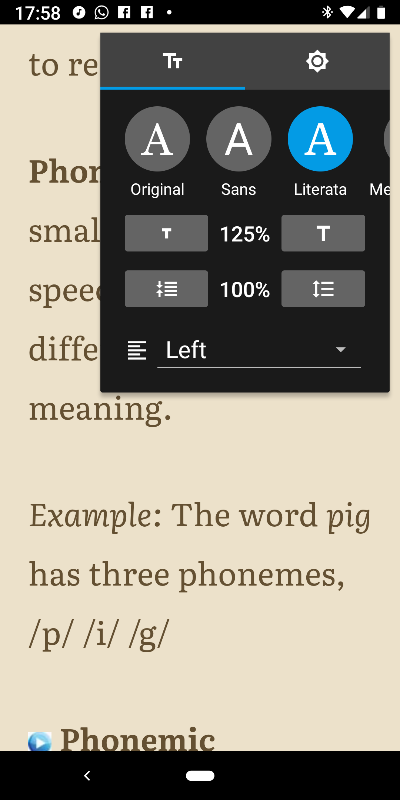Over the last four years or so, the DAISY Consortium has been driving the testing of EPUB reading systems and apps. It is quite a challenge, but I think we have a pretty good methodology in place. This short article will give an overview of how the testing works and will provide an analysis of the value it delivers to various communities. Of special interest will be the newly updated Fundamental Accessibility Tests for Reading Systems, which will kick off the January 2019 round of testing.
The Methodology
The unique approach lies in the Fundamental Accessibility Tests for Reading Systems, which is an EPUB 3 publication. It is an all-in-one testing system containing uniquely identified pass or fail tasks that a person with a disability performs. The results, which indicate whether the tasks are supported or not, are recorded on epubtest.org. We know this test title is perfect from an EPUB conformance perspective, so if we experience difficulties we don’t need to wonder if there was a mistake in the EPUB. We can therefore confine our testing to the reading system/app and the assistive technology that is being used.
Three disability groups are targeted:
- Persons who are blind and use screen readers
- Persons who have low vision and use visual adjustments to make the title easier to see
- Persons with learning differences such as dyslexia who rely on features such as increasing the line spacing or having the text read to them while the text is highlighted

An Example of a Test That a Person Who Is Blind would Perform
A blind person like me uses a reading app with a screen reader. This reads the app menus and book contents using TTS (text to speech). Screen readers are available for computers, smartphones, and tablets, but not all apps work with them, including reading apps. This is why we test reading apps to make sure the fundamental accessibility features are supported.
The item below is a single test in the “Non-Visual” Reading chapter. Note, there are three parts:
- It has the unique identifier for reporting
- It gives the instructions for the test
- It provides guidance as to what passes or fails
An Example of a Test That a Person with a Specific Learning Difference would Perform
Individuals with reading differences such as dyslexia rely on personalization, and this can be critical as a learning strategy. For example, documents are printed onto colored paper using preferred fonts and spacing to make it easier to read and understand information. This personalization is now available in reading apps, and our tests for visual adjustments examine these capabilities.
Another essential strategy is reading the text on the screen while it is simultaneously read aloud. This dual mode of reading has been shown to improve comprehension and strengthen reading skills. The read-aloud feature is so important than many apps now include it. Read-aloud also gets its own section in Fundamental Accessibility Tests.

Disclaimer: This is to inform readers that the views, thoughts, and opinions expressed in the article belong solely to the author, and do not reflect the views of Amnet.
Copyright © 2020 Amnet. All rights reserved. No part of this publication may be reproduced, distributed, or transmitted in any form or by any means, including photocopying, recording, or other electronic or mechanical methods, without the prior written permission of the publisher, except in the case of brief quotations embodied in critical reviews and certain other non-commercial uses permitted by copyright law. For permission requests, write to John Purcell, Executive Editor- Amnet, addressed “Attention: Permissions” and email it to: [email protected]
